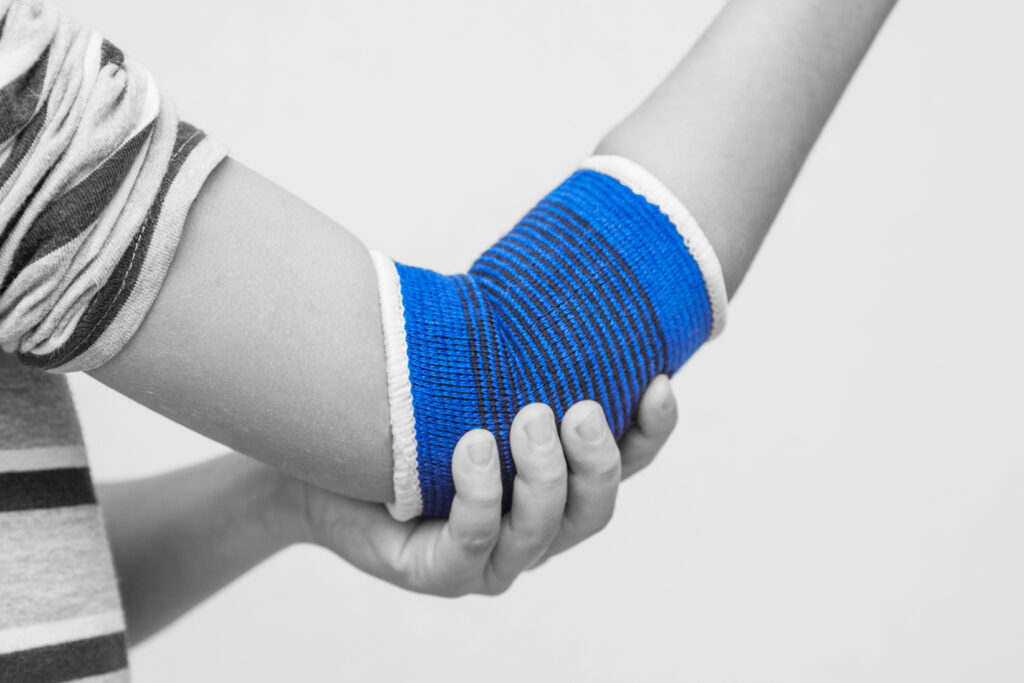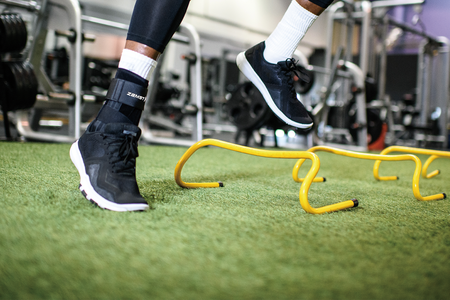Tennis and Golfer’s elbow can be a debilitating condition for people that can limit their function and someone’s ability to enjoy sports. Tennis elbow which is otherwise known as lateral epicondylitis affects the extensor tendon of your elbow and is usually caused by repetitive motions such as a backhand in tennis. Golfer’s elbow which is essentially the opposite affects the medial aspect of the elbow and is otherwise known as medial epicondylitis. It is caused by repetitive flexion in the wrist and ulnar deviation which is seen in a golf swing. Often times people wait too long after symptoms occur, and it goes untreated which makes the rehab that much harder. It is important to be proactive with symptoms and finding the source before it stops someone from playing the sport they love. Here are 5 selfcare tips to relieve pain from Tennis or Golfer’s elbow.
Compression

What does compression do for an injury? Primarily it helps reduce swelling and keeps blood moving more efficiently in the injured area. Especially while being physically active playing tennis or golf its important to have the most efficient amount of blood flow to keep the area warm. A compression elbow sleeve is a great to get the area warm and get some relief while playing the sport. Essentially, the more blood flow you get to the area the better chance to heal and have a decrease in symptoms. However, compression alone will only be one part of the equation when it comes to decreasing symptoms. People always need to follow up the compression with some form of exercises to work on strength, mobility and function.
Exercises
Once pain is a symptom for both Tennis elbow and Golfer’s elbow, we know that weakness becomes an issue with both the wrist/elbow and shoulder. There should always be some form of stretching, strengthening (isometric, concentric and eccentric) integrated into a program to reduce symptoms. A recent study looked at a comprehensive rehabilitation program for treating lateral elbow tendinopathy. It concluded that strength exercises should have phases and progressions for scapular strength, wrist and elbow1. Exercises consists of:
- Warm up: Arm bike or treadmill
- Scapular muscle strengthening matrix: Isometric scapular contraction, elastic resistance rows with elbows at side, prone extension with or without a weight
- Wrist and elbow strengthening matrix:
Phase 1 – Short level isometric wrist extension
Phase 2 – Short lever resisted wrist extension
Phase 3 – Long lever resisted wrist extension
- Wrist extensors stretching
Cryotherapy

Cryotherapy is an effective way at reducing pain by causing vasoconstriction of superficial blood vessels therefore reducing pain that may be present.2. One modality that has been heavily research is ice massage with tendinopathy’s which tennis elbow and golfer’s elbow are. It has shown to reduce pain and allow the individual to start exercising sooner with less discomfort. Other alternatives may include ice pack, cold tub, and actual cryotherapy machine. This can all be effective in conjunction with other treatments. If ice massages are applied, they should be for 3-5 minutes around 3-4 times a day.
Ergonomics
Even though Tennis Elbow and Golfer’s elbow have names derived from sports most of these conditions happen from everyday jobs that involve a computer or phone. An ergonomic assessment at your work might be a great idea to make sure the desk/mouse and keyboard are all set up for success. This will help reduce the workload on the extensor or flexor tendons of your elbow. Recently, an ergonomic mouse has been shown to reduce symptoms and it keeps your hand in more of a neutral/anatomical position reducing stress load on your extensor tendons. It’s important to let someone come evaluate your workstation to give you the best chance at success and reduction of symptoms.
Bracing

One thing we know is that Tennis Elbow and Golfer’s elbow can be really painful. Counterforce braces have been proven to be successful in early stages of rehab for improving pain thresholds.3. The idea of the brace is that it places tension on a more distal segment of the tendon while allowing time for the more proximal tendons near the insertion point to heal. This allows people to get back to sports or jobs that require repetitive movements. The brace shouldn’t be worn at rest but more during activity.
Zamst carries braces specifically for the elbow called Zamst Elbow Band, which help reducing elbow strain and relieving common pain from tendonitis. It can be used for both inner and outer elbow strain as well.
ABOUT THE AUTHOR
EVAN JEFFRIES is a physical therapist with a Doctorate in Physical Therapy (DPT) from the University of St. Augustine for Health Sciences. He is also the owner of Evolving Motion and has vast knowledge of the musculoskeletal system and has treated many orthopedic conditions by bringing a proactive approach to healthcare and lifestyle. Recently he has also been active on social media as an injury analyst mainly in related to injuries NBA players have sustained. Evan can be followed on his social media accounts.
- Day JM, Lucado AM, Uhl TL. A Comprehensive rehabilitation program for treating lateral elbow tendinopathy. J Sports Phys Ther. 2019 Sep; 14(5): 818-829
- Christmas KM Patik JC Khoshnevis S, et al. Pronounced and sustained cutaneous vasoconstriction during and following cryotherapy treatment: Role of neurotransmitters released from sympathetic nerves. Microvasc Res. 2018; 115: 52-57.
- Borkholder CD Hill VA Fess EE. The efficacy of splinting for lateral epicondylitis: a systematic review. J Hand Ther.2004; 17: 181-199.






